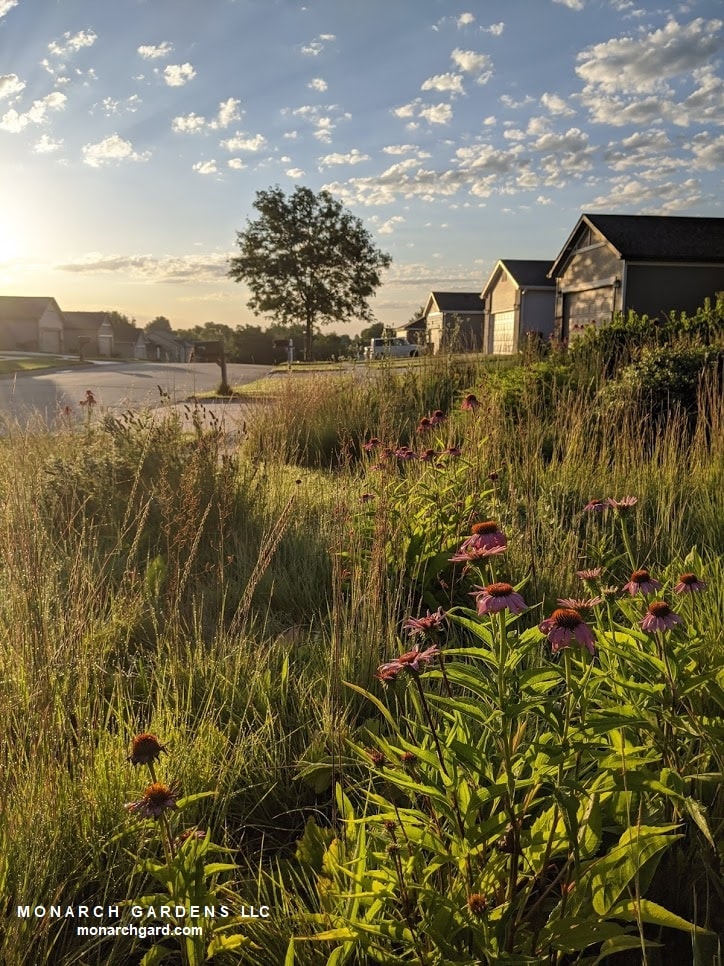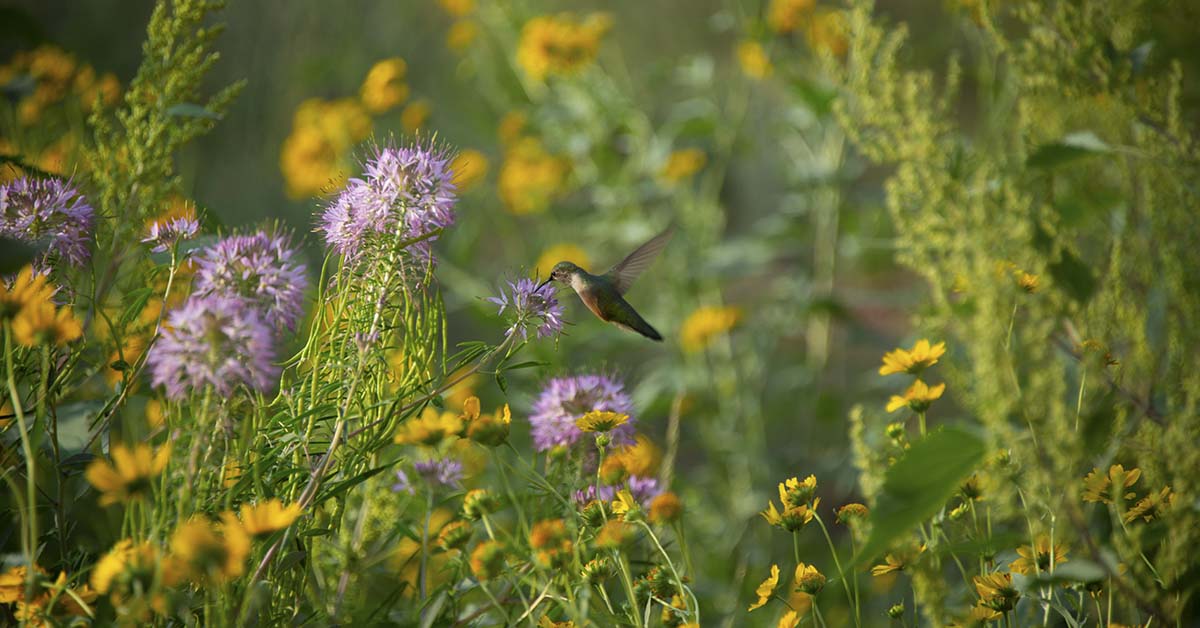Are you tired of the hassle and expense of maintaining a traditional lawn? Then a prairie yard may be the perfect solution for you! Benjamin Vogt, a renowned gardener, and author, advocates for prairie planting, a landscaping philosophy that involves replacing traditional lawns with native grasses and wildflowers. Vogt believes that prairie-style yards are not only beautiful but practical. Besides being environmentally friendly, they are easy to maintain, require minimal watering, and offer a natural habitat for wildlife.
He began his prairie planting journey in Lincoln, Nebraska, where he discovered that his suburban property had a massive lawn. Initially, Vogt filled his front borders with common perennials like astilbe and hostas. However, after exploring local prairies on walks, he added native plants like blazing stars and asters. After adding prairie plants, Vogt noticed a significant increase in wildlife in his garden.
Vogt’s experience inspired him to rip out half of his front lawn and plant a 1,000-square-foot designated prairie. He now rarely waters his garden and only has to mow once in the spring. Vogt shares that the maintenance advantages of prairie-style yards are significant, and he now enjoys his garden like he’s on a mini-vacation. He advocates for prairie planting through his blog, online classes, books, and landscape design business, Monarch Gardens1.

Benefits of a Prairie Yard
Prairie yards provide a natural habitat for insects, birds, and other animals. They also help restore groundwater and reduce urban flooding; the native plants pull carbon dioxide out of the air. Prairie planting can be a lot of fun, and Vogt encourages gardeners to limit their plant palette to five: one native grass, and four wildflowers. They should also choose shorter varieties (under 3 feet) and clumpers that behave well. Vogt recommends planting asters and grasses, which can make a massive difference in supporting wildlife and taking small steps to reduce lawns’ size.
Compared to Lawns
Lawns with grass provide a few benefits such as creating green spaces, reducing the urban heat island effect and absorbing some carbon dioxide from the air. However, overall, lawns are terrible for the planet. The American addiction to lawns means that grass is America’s largest irrigated agricultural crop, using up more water than corn, wheat, and fruit orchards combined. Maintaining lawns requires excessive water, leading to water waste and higher water bills.
Furthermore, lawn care often involves using chemical fertilizers and pesticides, which pollute the air and soil. The average American homeowner spills 17 million gallons of gas annually while filling up lawnmowers. It is time to recognize the excessive use of resources and cultural waste associated with lawns. Lawns Cost Americans over $36 billion every year, which is four-and-a-half times more than the annual budget of the Environmental Protection Agency2.
In addition, lawns provide minimal environmental benefits compared to their potential. Instead of lawns, native grasses can be grown to store carbon more efficiently and provide a habitat for insects, birds, and other animals. In addition, a lawn that’s used to produce food can feed a family, provide jobs, and boost community morale. Furthermore, a lawn filled with native plants and shrubs helps to restore groundwater and reduce urban flooding.
In some areas, there is no reason for conventional lawns to exist. For instance, amid an ongoing mega-drought, cities in Southern California are offering homeowners buyouts to convert their grass lawns into native vegetation or shaded, xeriscaped rock. In other places, traditional turf grass may grow naturally, but it’s no match for native grasses if the goal is to reduce the impact on the planet. Ultimately, lawns have potential, but this potential is wasted in pursuing what is essentially an outdated cultural trend. It’s time to rethink our lawns and explore better options for the planet.
Prairie-style yards are an excellent solution for anyone looking for a low-maintenance and environmentally friendly garden. By planting native grasses and wildflowers, you can provide a habitat for wildlife and help reduce your water bills. Vogt’s prairie planting philosophy is a step in the right direction towards a sustainable future, and you too can contribute to this vision by creating your prairie-style yard.
For more information on creating a prarie-style yard, check out this article by Mid West Living.
Keep Reading: How to Make a Polytunnel that Will Last Forever (& 5 Reasons You Need One)
Sources
- “Why You Should Consider A Prairie-Style Yard—And How to Start One.” Mid West Living. Teresa Woodard. February 28, 2023.
- “Lawns are the No. 1 irrigated ‘crop’ in America. They need to die.” Grist. Eric Holthaus. May 2, 2019.

